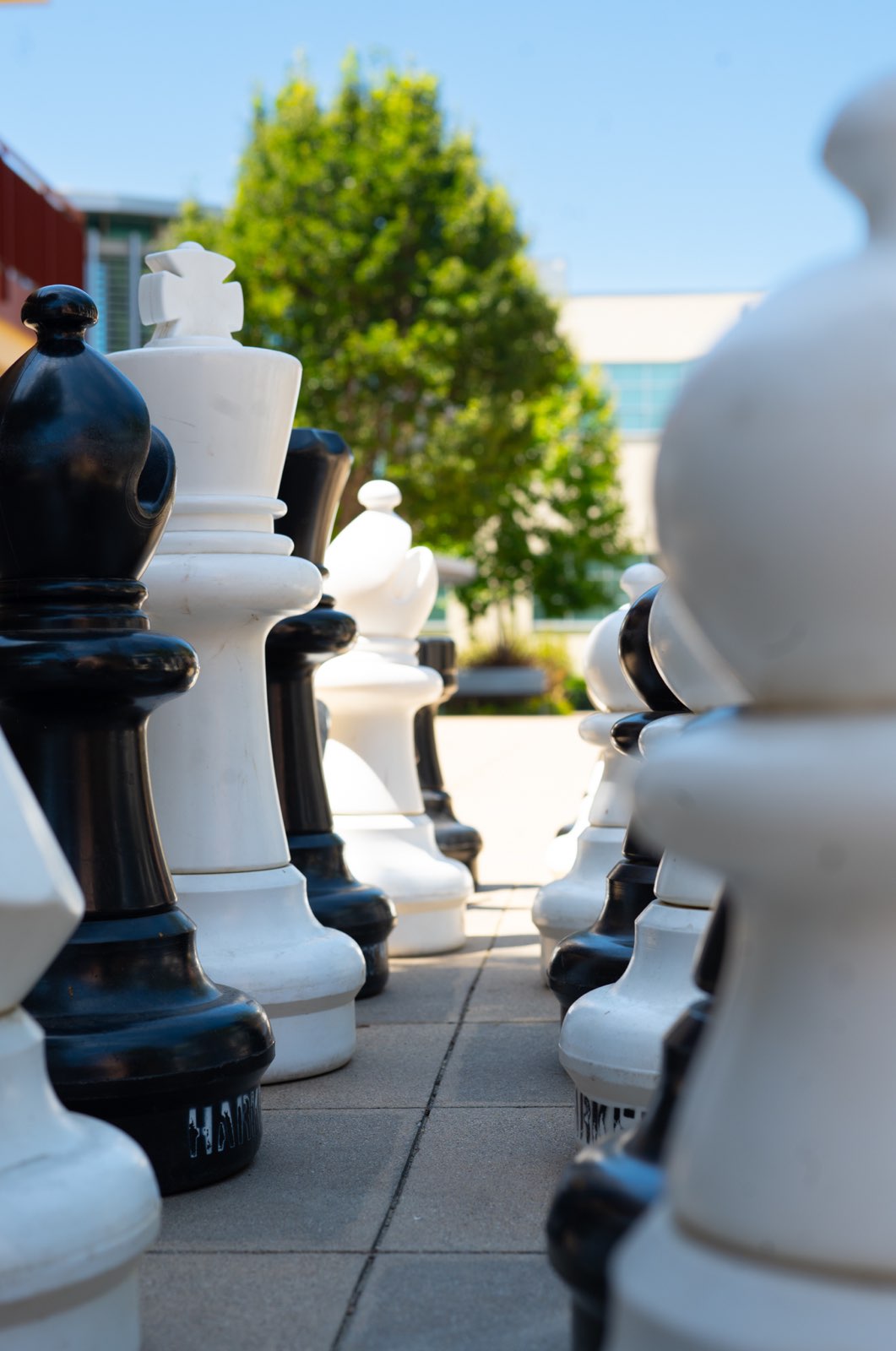Two chess players scrutinize the chessboard, their minds simultaneously weighing the present and future state of the game, hoping to gain an advantage with their moves. As white spots a flaw in his opponent’s defense, he walks up to the board and lifts up one of the pieces, hauling it over to its new square on the giant chessboard.
Tucked between Nichols and Dobbins, the giant chessboard is a hotspot for both experienced and amateur chess enthusiasts alike, serving as a bonding activity for students or a battleground for friendly competition. Standing amidst oversized, waist-high pieces while making tactical decisions takes the game to a new form of mental and physical engagement.
The chessboard dates back to 2011, when upper school math teacher and Chess Club advisor Anthony Silk received a $500 check from the Institute of International Education after one of his students won a scholarship. With the support of former Head of Upper School Butch Keller, he decided to use the money to fund the giant chess board.
“I’ve always thought we should have a large chess set outside because I was running the chess club,” Silk said. “I always just liked the idea of being able to be outside and doing chess.”
Facilities manager J.R. Del Alto took on the task, working six-hour shifts for two days straight. Using various cutters and tools, he carved out the outlines of all 64 squares and then colored each one with concrete stain. Finally, he filled the pieces with sand and placed them in their respective positions. More than a decade later, Del Alto continues to cherish the project that he helped bring to life.
“Every year when I pass by here, I think, ‘That was well worth the time,’” he said. “We like to do things that kids like to enjoy out here, and it seemed to be a real attention grabber as well.”
Junior Arturo Vilalta has little interest in playing chess professionally. However, he enjoys the social opportunities that the giant chessboard presents.
“I find myself enjoying playing chess with my friends in a more casual setting rather than in a more competitive one,” Arturo said. “I still play a part in the game even when I’m not playing, whether it be by discussing strategies mid-game amongst my friends or laughing at one of them when they make the occasional blunder.”
Over the years, issues have risen with the chess pieces’ condition. Natural deterioration and frequent use have resulted in damage to the pieces. Additionally, pieces are sometimes lost or even stolen by students.
“The main improvement we should make is to acknowledge that the pieces are a gift and a privilege to us and that we should try our best to take care of them as much as we can,” Arturo said.
Silk still keeps the board in the best condition possible with frequent repairs to the pieces. He hopes for all students to experience the installation, whether that be through watching a game of chess or playing on the board.
“I’ve always thought we should have a large chess set outside because I was running the chess club,” Silk said. “I always just liked the idea of being able to be outside and doing chess.”




